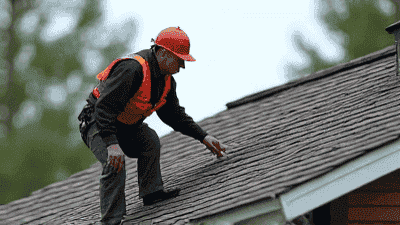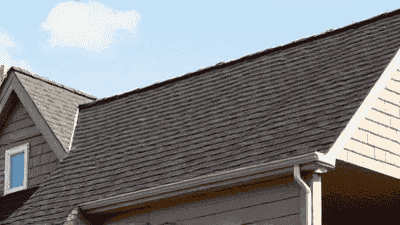
Maintaining the integrity of your roof is crucial for the overall health of your home. A well-maintained roof protects against the elements, enhances energy efficiency, and contributes to the aesthetic appeal of your property. However, roofs are subject to wear and tear over time due to environmental factors, age, and unexpected damage. Ignoring the signs of a failing roof can lead to severe issues, including leaks, structural damage, and costly repairs.
Your roof is one of the most critical components of your home. It serves several vital functions, including:
Protection from the Elements: A sturdy roof shields your home from rain, snow, wind, and the sun's UV rays, preventing water damage and structural decay.
Energy Efficiency: A well-maintained roof helps regulate indoor temperatures, reducing your reliance on heating and cooling systems. This can lead to significant energy savings over time.
Aesthetic Appeal: Your roof contributes to the overall appearance of your home. An attractive roof enhances curb appeal and can increase property value.
Structural Integrity: Proper roof maintenance protects the structural framework of your home. A compromised roof can lead to sagging ceilings, damaged walls, and other serious issues.
By being proactive in maintaining your roof, you can extend its lifespan and avoid costly repairs or replacements.

Recognizing the signs that your roof requires repair is essential for preventing further damage. Here are seven key indicators to watch for:
One of the most visible signs that your roof may need repair is missing or damaged shingles. Factors such as wind, hail, and aging can cause shingles to crack, curl, or become dislodged. If you notice missing shingles or those that appear damaged, it is crucial to take action.
What to Do:
A sagging or uneven roofline is a serious indication that your roof may be failing. This issue often arises from underlying structural problems, such as weakened rafters or supports.
What to Do:
Water leaks can lead to significant damage if ignored. If you notice water stains on your ceilings or walls, it may indicate a roof leak. The location of the stain can help pinpoint the leak's source.
What to Do:
As asphalt shingles age, they begin to lose granules. These granules protect shingles from UV rays and prevent deterioration. If you notice an increase in granule loss, it is a warning sign that your shingles may need replacement or repair.
What to Do:
Mold and algae growth on your roof can indicate moisture retention problems. These organisms thrive in damp environments, which can harm your shingles and lead to premature deterioration.
What to Do:
Roof flashing is crucial for preventing water intrusion at joints and seams, such as those around chimneys and vents. If flashing is damaged or deteriorating, it can lead to leaks and water damage.
What to Do:
If you notice a sudden increase in your energy bills, it may be due to a poorly insulated or damaged roof. A compromised roof allows conditioned air to escape, forcing your heating or cooling system to work harder.
What to Do:
Identifying one or more of the aforementioned signs is only the first step. It is crucial to take appropriate action to address the issues effectively. Here are the steps to follow:
Take photographs of any visible damage or signs of wear. This documentation can be valuable when discussing repairs with contractors and may also be necessary for insurance claims.
Perform a comprehensive inspection of your roof, both from the ground and from an elevated position if safe to do so. Check for missing or damaged shingles, sagging areas, and signs of leaks. If you are uncomfortable inspecting the roof yourself, consider hiring a professional to conduct a thorough examination.
Once you have documented the issues, it is time to consult a roofing professional. Look for reputable contractors with positive reviews and appropriate licensing and insurance. A qualified contractor can assess the extent of the damage, recommend solutions, and provide cost estimates.
Before deciding on a contractor, obtain multiple quotes to compare prices, services, and warranties. This will help ensure you receive fair pricing and quality workmanship.
Depending on the severity of the issues, you may have several options for repair:
Once you have selected a contractor and agreed on a repair plan, schedule the repairs as soon as possible. Delaying necessary repairs can lead to further damage and increased costs down the line.
After repairs have been completed, establish a regular maintenance routine to keep your roof in optimal condition. Regular inspections, cleaning gutters, and promptly addressing any minor issues will help prolong the life of your roof.

Taking proactive measures can help maintain your roof's integrity and prevent future issues. Here are some preventative strategies to consider:
Conduct routine inspections of your roof, at least twice a year. Pay special attention after severe weather events. Regular inspections will help you identify potential issues before they escalate.
Clogged gutters can lead to water backup and damage to your roof. Clean gutters regularly to ensure proper water drainage. Consider installing gutter guards to minimize debris accumulation.
Trees that hang over your roof can cause damage during storms. Trim branches to prevent them from making contact with your roof and causing scratches or punctures.
Adequate insulation and ventilation help regulate roof temperature, preventing ice dam formation in winter and excess heat buildup in summer. Ensure that your attic is properly insulated and ventilated for optimal performance.
If you are considering roof replacement or repairs, invest in high-quality materials suited to your climate. Quality materials may have longer lifespans and better performance, ultimately saving you money over time.
Regularly inspect and maintain penetrations, such as vents and chimneys, as these areas are vulnerable to leaks. Ensure that flashing is intact and that all seals are in good condition.
Recognizing the signs that your roof needs repair is essential for maintaining your home's health and avoiding costly damage. By being proactive and attentive to potential issues, you can protect your investment and ensure a safe, comfortable living environment.
Regular inspections, addressing problems promptly, and implementing preventative measures will help prolong the life of your roof and improve the overall efficiency of your home. As a critical component of your house, your roof deserves proper care and attention to thrive throughout its lifespan.
Taking action today can save you considerable time, money, and headaches in the future. If you are unsure about the health of your roof, do not hesitate to reach out to a qualified roofing professional for an assessment and personalized recommendations.